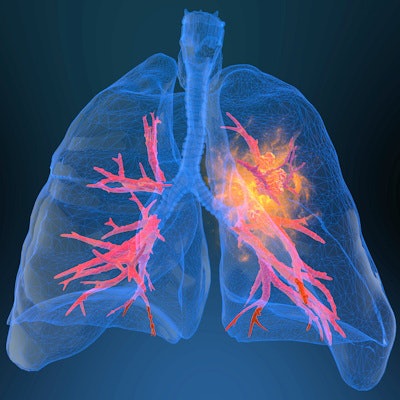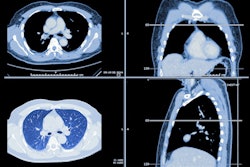
CT lung cancer screening reduces the risk of death from lung cancer, according to a new meta-analysis that combines data from all randomized controlled trials performed so far. In fact, CT lung screening compares favorably with breast screening, researchers reported in the November edition of the Annals of Family Medicine.
In an analysis of eight randomized controlled trials (RCTs) that covered over 90,000 individuals, CT lung cancer screening produced a relative risk reduction of 0.81 for death from lung cancer and an absolute risk reduction of 0.4%, both numbers that were statistically significant. On the other hand, screening did not reduce all-cause mortality to a statistically significant degree (Annals of Family Medicine, November 2020, Vol. 18:6, pp. 545-552).
While several large randomized controlled trials of CT lung cancer screening have demonstrated a mortality benefit, a pair of RCTs -- one in Italy and one in Denmark -- showed no such benefit. Most recently, a large study in China failed to demonstrate a mortality benefit, but this study only included one round of screening.
Therefore, a research team led by Dr. Mark Ebell of the University of Georgia decided to perform an updated meta-analysis that included results from the Dutch-Belgian Randomized Lung Cancer Screening (NELSON) trial, which were published in January 2020. NELSON showed that screening reduced total lung cancer deaths by 24% for men and 33% for women, compared with no screening.
In their meta-analysis, Ebell et al included data from eight randomized trials that altogether encompassed 90,475 individuals. All trials were considered to be high-quality and compared CT lung screening with either no screening or x-ray screening, which was considered to be the same as no screening, as it has not been shown to produce a mortality benefit.
| Impact of CT lung cancer screening on mortality | ||||
| No screening | CT lung screening | Absolute risk reduction for screening | Relative risk reduction for screening | |
| Lung cancer-specific mortality rate | 2.12% | 1.72% | 0.4% | 0.81 |
| All-cause mortality rate | 8.48% | 8.14% | 0.34%* | 0.96* |
The numbers indicate that 250 people would have to be screened to prevent one death due to lung cancer over a period of 5.2-10 years of follow-up. This compares favorably with breast screening, which has a number needed to screen of 351 for women ages 50-59 and 233 for women ages 60-69.
While screening's impact on all-cause mortality was not statistically significant, the 0.34% mortality reduction shown in the study was comparable to lung cancer-specific mortality of 0.4%. Ebell et al estimated that the patient population would have to be four times larger than the 90,475 individuals studied to show a statistically significant reduction in all-cause mortality.
The researchers also addressed the issue of overdiagnosis -- in which cancers are detected that if left undetected would never become symptomatic. They estimated a 20% overdiagnosis rate in studies that followed patients for eight or more years, but they noted that a longer follow-up period would be necessary to determine whether some of these cancers would become symptomatic.
Ebell et al concluded by noting the low uptake of CT lung cancer screening in the U.S., a rate that would need to be improved for screening to have a full impact. They recommended the adoption of standardized follow-up protocols that would minimize harm, as well as centrally organized screening recruitment.



















